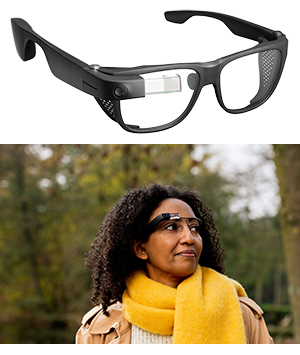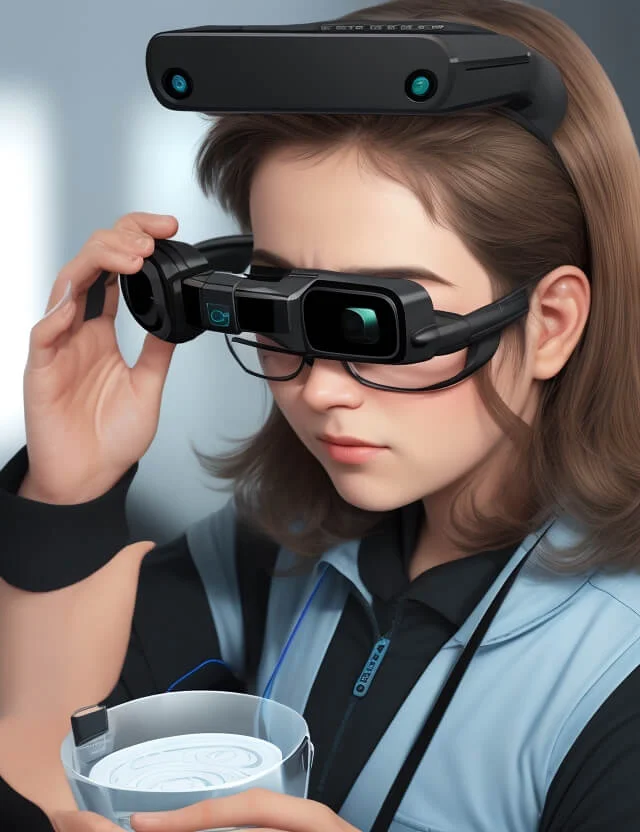Mobility Aids for Visually Impaired Users: Enhancing Independence and Navigation
Discover Advanced Assistive Tools for Individuals With Aesthetic Impairments
The landscape of assistive technology for individuals with aesthetic impairments is developing rapidly, offering a variety of ingenious tools that enhance autonomy and involvement (Braille displays and notetakers). From wise glasses that perfectly combine aesthetic input with auditory assistance to innovative navigating applications that redefine spatial recognition, these tools are reshaping opportunities. The newest improvements in Braille modern technology and voice-activated systems significantly contribute to ease of access. However, the implications of these advancements expand much beyond simple functionality; they test standard assumptions of disability and independence. What might this mean for the future of incorporation and support?
Smart Glasses Innovations
Smart glasses stand for a significant innovation in assistive modern technology for individuals with aesthetic problems. Geared up with cams and sensing units, clever glasses can capture real-time aesthetic details, which is then refined and conveyed to the individual via sound comments or haptic experiences.
In addition, developments in man-made knowledge have actually further improved the abilities of wise glasses. Equipment learning algorithms can recognize faces, read text, and determine items, making them invaluable tools for daily tasks. Users can get auditory cues that provide context about their atmosphere, cultivating freedom and self-confidence.
In addition, the ergonomic design and lightweight nature of numerous wise glasses make them appropriate for extended use, guaranteeing comfort while enhancing functionality. As these devices continue to develop, they hold the potential to revolutionize the way people with aesthetic problems experience their everyday lives, bridging the gap in between availability and modern technology. The continuous research study and growth in this area pledge to expand the possibilities for wise glasses, making them a crucial element of modern-day assistive devices.
Navigating Application and Equipment
Numerous navigation applications and devices have arised as essential resources for people with visual disabilities, dramatically enhancing their capacity to pass through unfamiliar settings. These technologies take advantage of GPS functionality, audio cues, and real-time data to offer users with accurate navigation assistance.
One famous example is the Aira app, which connects individuals to qualified agents who can give aesthetic descriptions of surroundings and navigating assistance via a live video clip feed. This service improves the user's spatial awareness and confidence while browsing. An additional significant tool is Seeing Eye GPS, which provides voice-guided navigating and sights, allowing individuals to gain access to important details concerning their surroundings.

As modern technology proceeds to advance, the development of much more advanced navigation tools guarantees to additional equip individuals with visual impairments, assisting in smooth wheelchair and assimilation right into varied atmospheres. Such advancements contribute in promoting an extra comprehensive culture.
Braille Innovation Developments
In recent times, innovations in Braille technology have actually significantly transformed just how people with visual disabilities accessibility information and involve with the globe around them. The development of mobile Braille display screens has changed reading by enabling customers to attach wirelessly to computers, kids eye doctor smartphones, and tablets. These tools transform message right into Braille in real-time, making it possible for smooth interaction with digital content.
Furthermore, cutting-edge Braille printers have emerged, enhancing the manufacturing of responsive products. Modern embossers are much faster and much more efficient, enabling the rapid creation of Braille files and educational materials. This efficiency reduces the time and cost associated with producing Braille sources, making them extra accessible to schools and companies.
Additionally, the combination of Braille with other technologies, such as synthetic knowledge and artificial intelligence, has actually opened new methods for customized knowing experiences. Voice recognition and synthesis modern technologies can match Braille, offering an inclusive strategy to details dissemination.
As the demand for comprehensive education and workplace settings grows, these technical advancements play a crucial duty in equipping individuals with aesthetic impairments, guaranteeing they have equivalent accessibility to details and chances in numerous elements of life.
Wearable Devices for Freedom
A growing range of wearable gadgets is enhancing independence for people with visual problems, providing innovative options that boost navigation and day-to-day living. Braille displays and notetakers. These visit the website devices make use of advanced modern technologies to offer real-time responses and support, advertising autonomy in different settings

Wearable innovation additionally consists of smartwatches that can be set with accessibility functions, allowing individuals to get notices, track their places, or perhaps require help with the touch of a button. Some tools include fabricated knowledge to examine the atmosphere, offering audio summaries of neighboring items or people.
Voice-Activated Assistive Solutions
Leveraging voice-activated assistive solutions has changed the landscape of assistance for individuals with aesthetic problems, supplying hands-free interaction and access to a variety of jobs. These innovations use natural language handling and expert system to enable users to perform day-to-day tasks with basic voice commands.

Furthermore, current advancements in voice acknowledgment precision have actually improved the individual experience significantly, fitting varied accents and speech patterns. This inclusivity makes certain that more individuals can take advantage of these innovations, cultivating a greater sense of freedom.
Verdict
In conclusion, the advancement of sophisticated assistive tools significantly enhances the self-reliance and top quality of life for people with aesthetic impairments. Developments such as wise glasses, navigating apps, Braille innovation, wearable gadgets, and voice-activated remedies jointly cultivate an even more inclusive environment. These technologies empower users to navigate their surroundings with confidence and engage more fully with the world, ultimately promoting greater access and level playing fields for individuals dealing with visual difficulties.
The landscape of assistive innovation for individuals with visual impairments is developing quickly, providing a range of innovative tools that boost freedom and interaction.Smart glasses represent a significant advancement in assistive technology for people with aesthetic disabilities. As these devices proceed to advance, they hold the possible to transform the way people with aesthetic disabilities experience their daily lives, linking the space between accessibility and modern technology.In current years, developments in Braille technology have actually substantially transformed just how people with visual problems accessibility information and involve with the world around them. These technologies encourage users to browse their surroundings with self-confidence and engage even more fully with the globe, eventually advertising higher accessibility and equal possibilities for individuals encountering visual obstacles.